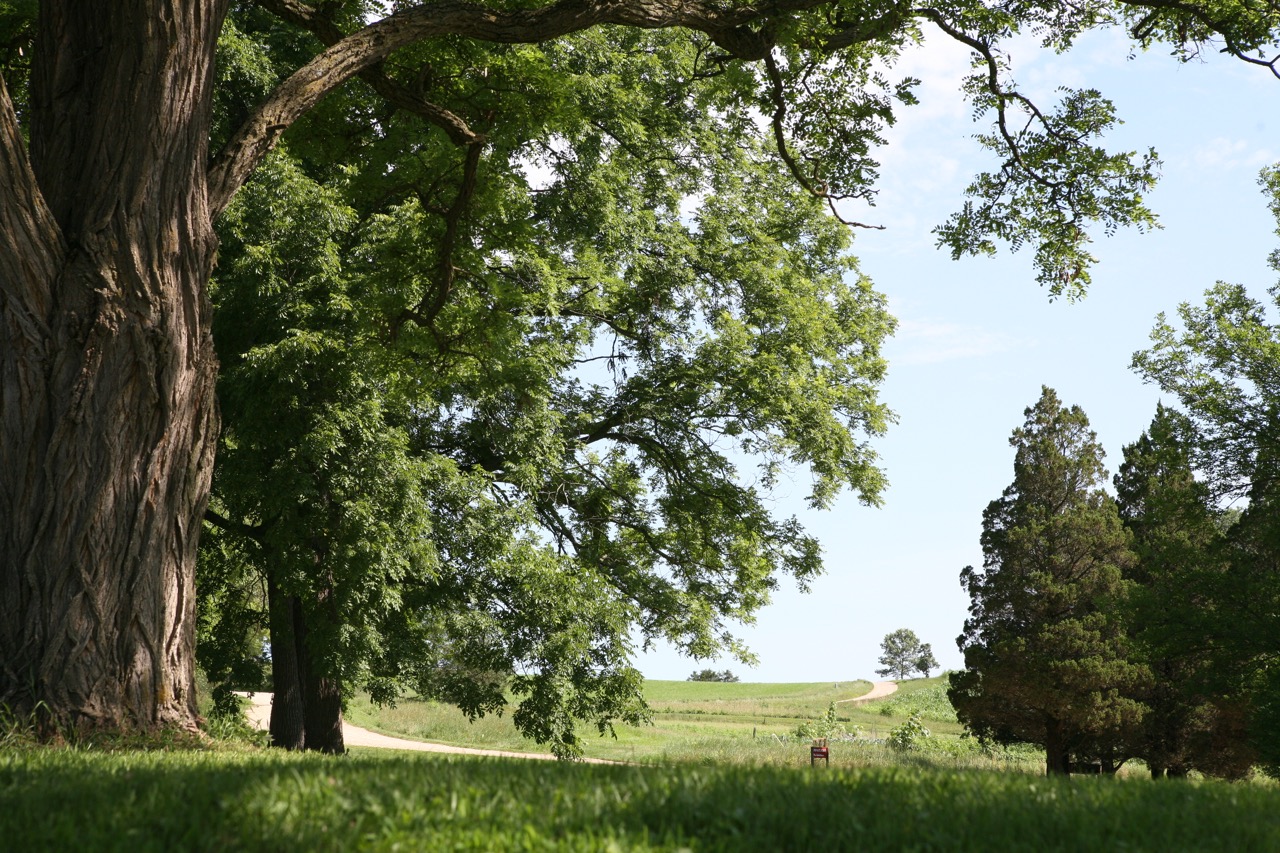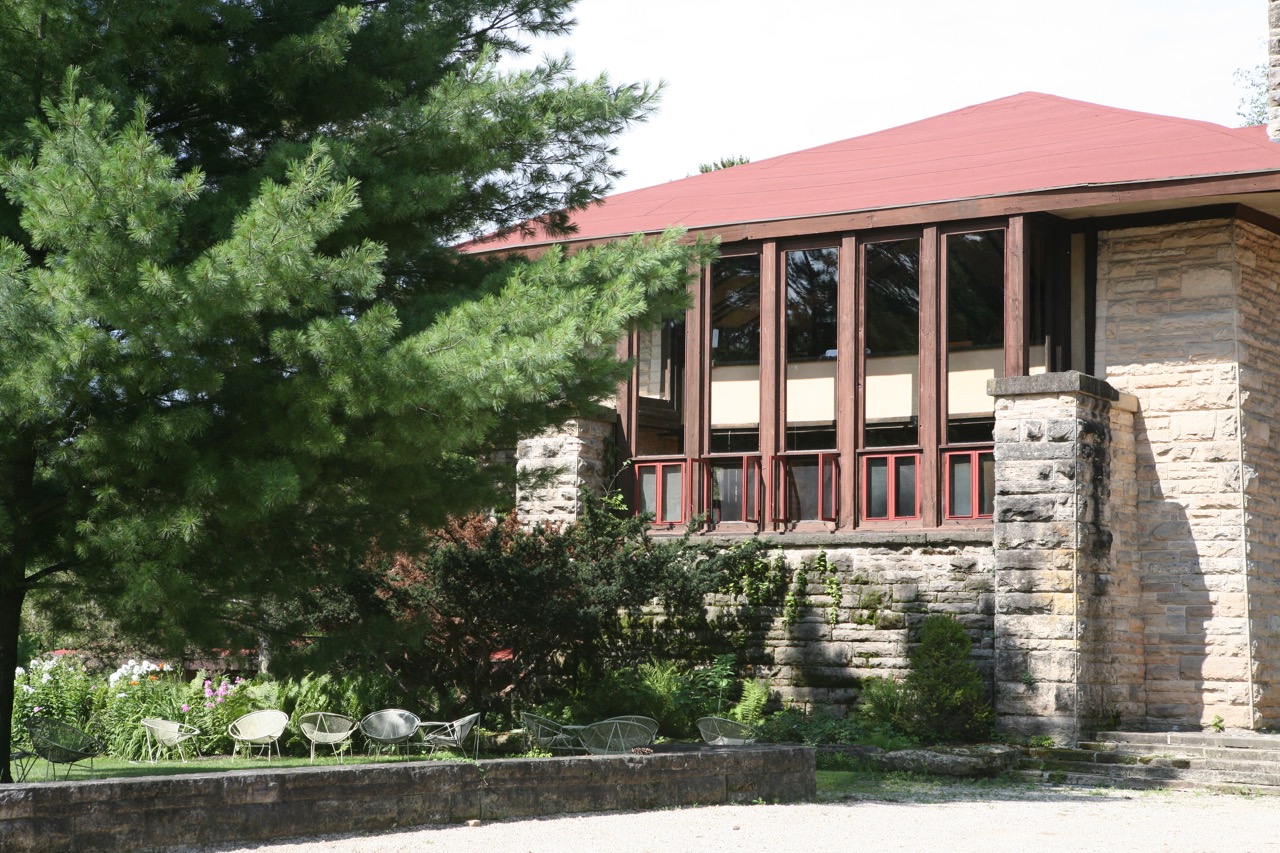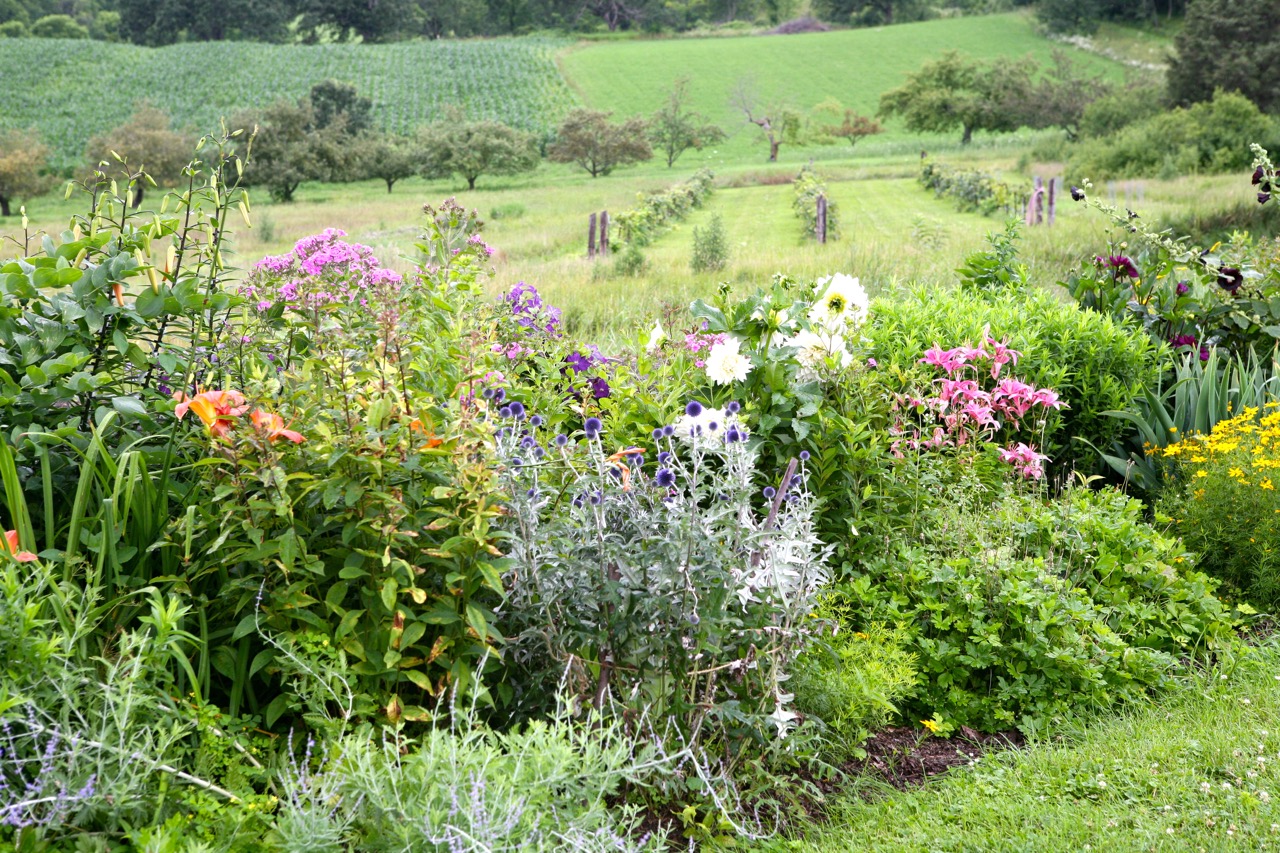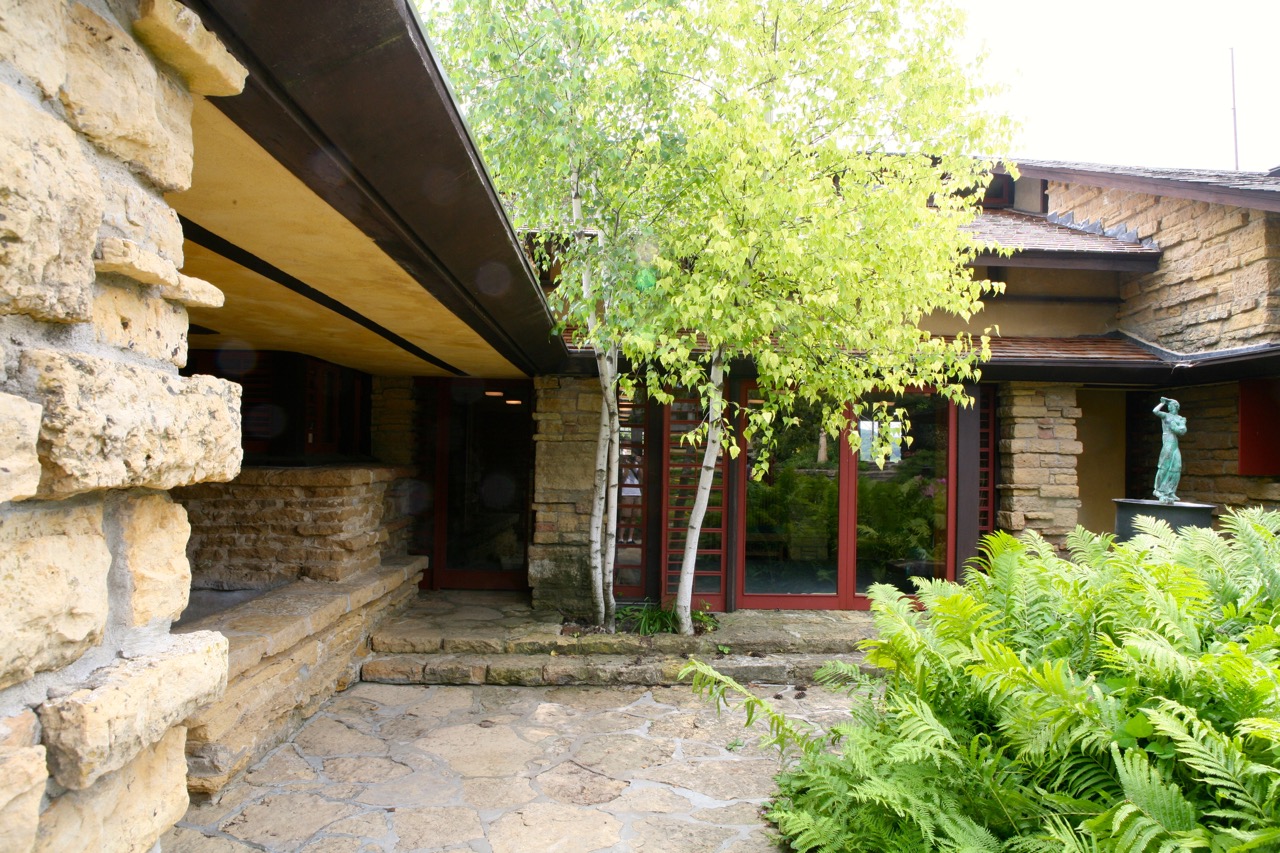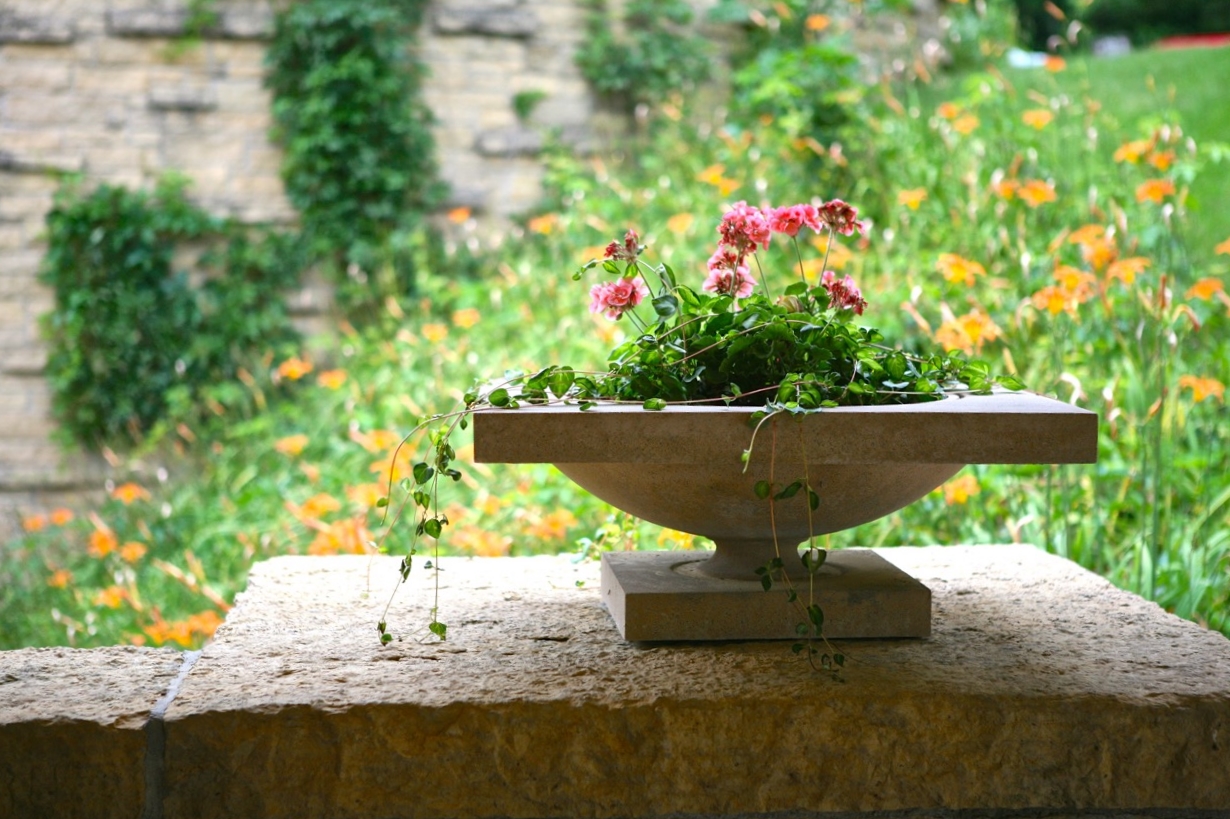I recently felt as if I had walked in the foot steps of award-winning landscape architect Lawrence Halprin. Halprin is well known as the designer behind the FDR Memorial in Washington, DC; Heritage Park in Fort Worth, Texas, and Freeway Park in Seattle. His work was “… marked by attention to human scale, user experience, and the social impact of design .… Simultaneously, he was able to attend to environmental concerns and to incorporate community participation in the design process.” (Source: The Cultural Landscape Foundation, Pioneers.)
Landscape architect Lawrence Halprin recalled hearing "trumpets playing" on his first visit to Taliesen. Source: tclf.org
Before his passing, Halprin spoke with The Cultural Landscape Foundation President and CEO Charles Birnbaum as part of their Oral Histories Project. During the interview Halprin discussed the years when he and his wife Anna found themselves living in Wisconsin. “Anna… said… ‘there’s a person near here that’s an architect of some note. .. his name’s Frank Lloyd Wright. … why don't we drive over there on Sunday?’… I remember to this day as you walked in there … a lintel over door said ‘What a man does that is who he is’. And I thought, woo, that's [something]. And then we walked inside and I started hearing trumpets playing … Mr. Wright was sitting next to the piano and there were some people sitting around. … a little concert going on. …we stayed all day and when I came out I said ‘that's what I'm going to do for the rest of my life.’“ The trip led Halprin to his ultimate calling of being a landscape architect.
Like Halprin, who “found himself living in Wisconsin", so have I. And like the Halprins, I turned to my spouse and said, “why don’t we check out Taliesin and see what it’s all about.” I was curious to learn more about the iconic Wright. How did this self-proclaimed greatest architect in the world combine building with nature at his own home and studio?
I strongly recommend that everyone visit Taliesin. This is a required trip for all interested in architecture and landscape design. Spring Green, with its rolling green hills and the clear Wisconsin river meandering through, is a place of great beauty. This part of the country is called the “driftless” area because the glaciers did not cut through as they did in the rest of the region. As a result, the landscape retains contours from before the last ice age.
Taliesin captured my imagination beyond my expectation - thanks to Wright's great design and the work of Taliesin Preservation Inc. Their mission is to preserve the elements that comprise the property - not an easy task with so many layers of experimentation - and to further the understanding of Frank Lloyd Wright’s legacy.
My “trumpets” were a series of “aha” moments, provoked by a brilliant design that worked on multiple levels. There were so many inspiring ideas: borrowed views, seamless connection between the inside and outside, building and garden complementing each other so that the combination has more impact than either element alone. The use of local natural materials grounded the place in its location, and great design executed in inexpensive materials made spaces more accessible. I loved Wright’s use of pools of water. These were placed near the house to reflect light and to mirror the sky.
As Wright said, “The outside of any building may now come inside and the inside go outside, each seems as part of the other. Continuity, plasticity, and all the new simplicity they imply have at last come home.”
For those wanting to get their hands dirty, every Thursday throughout the year, volunteers take care of the garden. Check out the volunteer garden opening on April 30th.
Add Taliesin to your next vacation and be sure to get tickets in advance. You won’t be disappointed.
Check out the Charles Birnbaum's video interview with Lawrence Halprin.

